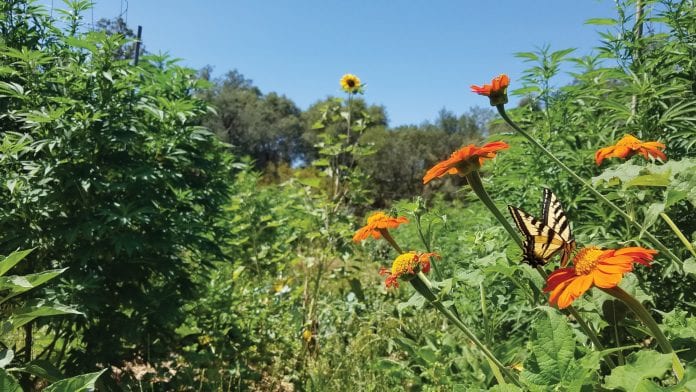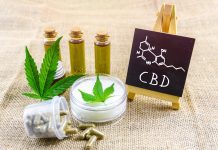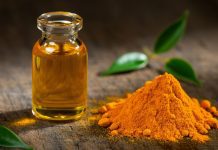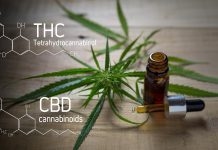
Nature’s intelligent design, recognised by older medicinal traditions, is finding its way back into modern western medicine, and cannabis is helping to open the way.
Today more people than ever are turning to cannabis to treat a wide range of conditions. So much so that cannabis is initiating new conversations in modern western medicine about what is the potential role of cannabis and other herbs in conventional medical practice.
Herbs, like cannabis, have not historically been prioritised by the industry of western medicine, but that is changing now. Herbal remedies are finding their way back into modern pharmacology and that trend is rapidly expanding. Increasingly, public and practitioners need reliable education about the use of cannabis and plant medicine in general. Much can be illuminated for us, if we look to the long established and often scientifically verified field of medicine known as traditional medicine.
Conventional medicine vs traditional medicine
As differentiated by modern western or conventional medicine, traditional medicine is partly defined by its treatment of the whole person and the universal use of whole plant herbal and other remedies as opposed to isolates or synthetic compounds as in conventional medicine. People are increasingly looking towards natural plant-based medicine or phytomedicines for their safety, low cost and effectiveness. The desire of more natural medicines and treatments is part of why integrative medicine (IM), with its more holistic approach – drawing deeply from the principles and practices of traditional medicine – and the use of many natural remedies, is becoming more popular. Integrative therapy practices are helping to build an exciting bridge between various types of medical practice and IM is decidedly helping to take modern medicine in a new direction.
Integrating traditional plant medicine with modern western medicine is a challenge but there is much we can learn from well-established plant medicine traditions in places such as in Japan, Korea, and China. In these classical medicine traditions, it is appreciated that to obtain the highest quality and most effective herbal medicines, great care is taken to produce from plants using nearly sublime ancient agricultural and harvesting practices.
This, to produce medicine in the most natural way. What was it grown in, how was it grown, what exactly was the condition of the environment and products used on the plant and what other stresses it faced, would all be intimately relevant questions in determining medicinal quality as well as market value.
As a common example of differentiated valuations, one ounce of ginseng may range in cost between €3 or €300 depending on the cultivation and preparation of the herb. Most conventional agriculture, even for medicinal herbs like cannabis, usually steers away from true natural farming techniques, and wouldn’t be considered to have very high value in traditional medicine, even though constituently it may be very similar or even the same.
There are some other ways to try to assure good medicinal quality of plant material such as organic certification, that while great and widely used, is simply not designed to assure safe medical quality of phytomedicines. A new global standard of medicinal plant production much in the same vein as the ancient systems of determining medical quality, is surely needed to address the rising global interest in effective phytomedicine.
For lack of such a system and understanding by consumers and practitioners, many cannabis products that are currently on the market and being taken for health and medicinal purposes, may not be of good medicinal quality. This is common for two main reasons;
- Agricultural or manufacturing practices; and
- Ultra-refinement of generally low-quality cannabis into isolate form that is used as an ingredient in a wide range of cannabis products.
Contamination is an obvious problem and not one easy to remedy, even though cannabis and other plants can be cleanly grown and still not be considered optimum medicine in traditional understanding. Many producers have turned to refining out contaminants in the lab. So, cannabis is grown expected to extract isolated cannabinoids, so that the mould and pesticides that are been present in the plant are removed. However according to traditional medicine, you can’t make good optimal medicine from an isolate or from mouldy product.
The entourage effect
These ancient truths fly in the face of practices that are increasingly allowed in ‘medicinal’ cannabis extractions. It is well known among traditional medicine practitioners that the full profile of naturally occurring chemical constituents working synergistically in the herb itself and made with clean naturally produced plant materials, produce the best therapeutic results. This process is key to optimising what is referred to as the ‘entourage effect’ in medicinal plants.
This is a not a fully understood process of complex inter-activity among natural plant medicine compounds and subtler substances that western science has not yet understood. These processes and potential benefits are unfortunately eliminated through the isolation process and using lesser quality plant material. This leads to a lower quality of medicine that is unfortunately now dominating much of the growing market for cannabis products.
One example of good medicine being made with cannabis is Epidyolex/Epidiolex, the leading prescribed FDA approved cannabis based drug in the world Epidyolex/Epidiolex uses a pure ‘whole plant’ extraction of cannabis in their preparations. To do this, GW Pharmaceutical, the maker, has more expensive process to standardise and get the drug made.
Sativex is another interesting example of a new drug that has been FDA approved for clinical trials, that is basically a fairly common traditional herbal remedy in its natural state, albeit produced with stricter ‘pharma’ manufacturing standards. Normal pharmaceutical drugs are made generally with synthetic compounds and sometimes from isolates derived from plant-based materials. Sativex is different and is what would properly be called a phytopharmaceutical.
A product that while containing natural state plant substances, also meets full pharmaceutical manufacturing compliance. These compliance standards are usually referred to as Good Manufacturing Practices (GMPs) and are generally globally recognised. The only real substantial difference however between Sativex and a preparation you could make at home with high quality materials, are the commercial quality control requirements to make the products for medical use and at scale. Sativex reveals a simple truth, that is that some of the best medicine available in the world could be readily and safely made in a home kitchen!
The complexity and vastness of plants
While rare and accelerated by cannabis, phytopharmaceuticals are not a new development. Traditional medicine has often guided western medical researchers towards the development of new therapies and much research has been done on the effectiveness of traditional whole plant medicines from which modern medicine eventually derives isolates.
However, problems of studying and verifying traditional medicine in their natural forms by conventionally western standards remain. We still can’t figure out how entourage or other processes works even on the physical level, much less subtle levels that are addressing other common features of traditional medicine.
There is much to learn still from these medicine traditions that recognised the underlying intelligent design in life and nature, and that integrate this understanding in reciprocity and respect within their systems. The complexity of whole plant medicine or traditional medicine not only speaks of the complexity and vastness of plants, but also of the one of human beings in relation to life on earth. With the recent understanding of epigenetics and quantum physics, science has just begun to grasp and validate knowledge from traditional medicine that some decades ago could be considered completely mysterious and discarded because it couldn’t scientifically be defined and understood well enough.
Particularly, Colombia´s 1156 of 2018 decree on traditional phytotherapeutical products, opens up a very interesting dialogue from the knowledge indigenous communities on traditional formulations with cannabis and a wide pharmacopeia, merged with modern practices and standards like GMPs, to the rest of the world. Phytropica, bringing state of the art cultivation and practices, recognises the value different communities can bring to the health industry worldwide, and is working to build bridges between ancient and modern medical traditions to bring the best of all worlds to its products. What would not be wise is ignoring these vast repositories of traditional medicinal knowledge for not being sophisticated enough when they are in fact, if produced properly, far more sophisticated medicine.
Cannabis is forcing a shift on public dialogue about what is good medicine. Well established and studied traditional medicine practices are here to help to illuminate the power of whole plant remedies. Led by the surging interest in cannabis as a remarkable and versatile therapy, natural whole plant medicines are now regaining attention and guiding people back to a promise of simpler, cheaper, safer, and often more effective natural plant remedies.
It is without doubt that plant medicine and cannabis, is something we will be seeing more of in the future, in all branches of medicine. This is an opportunity, by combining the wisdom of both modern and ancient traditions, for humanity to experience the benefits of an entirely new class of super effective, super safe and super inexpensive medicine. Modern medicine will continue to embrace this growing trend as if its very continued relevance depends on it.
Sara Barbosa and Benjamin Riggan
Phytropica SAS
+57 311 892 2491
contact@phytropica.com
This article will appear in Health Europa Quarterly Issue 11, which is available to read now.









